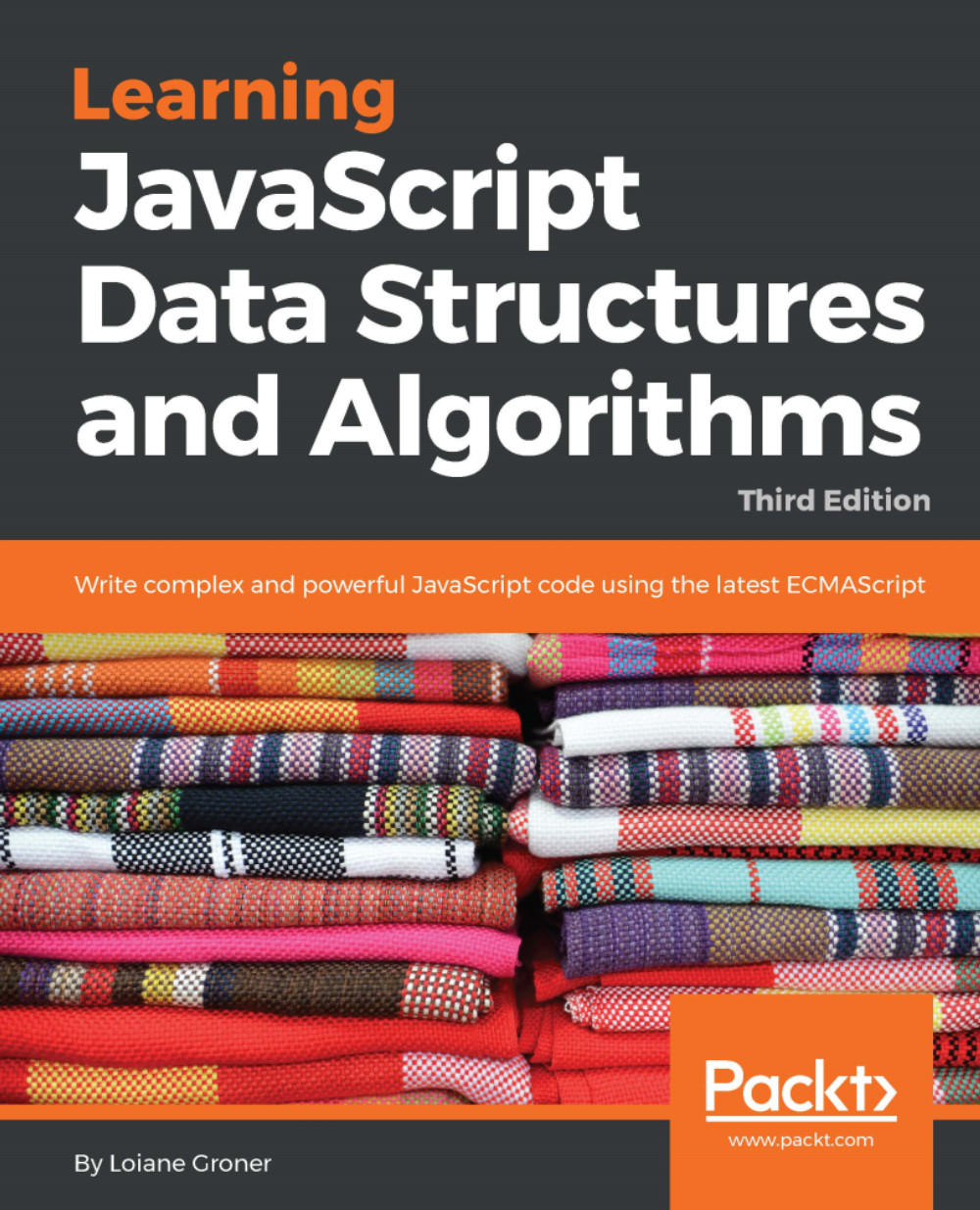Sequential data structures such as arrays (lists), stacks, queues, and linked lists should sound familiar to you by now. In this chapter, we will cover a data structure called sets, which is also a sequential data structure that does not allow duplicated values. We will learn how to create a set data structure, add and remove values, and search for whether a value already exists. We will also learn how to perform mathematical operations such as union, intersection, and difference. Finally, we will learn how to use the native ECMAScript 2015 (ES2015) Set class.
In this chapter, we will cover:
- Creating a Set class from scratch
- Performing mathematical operations with a Set
- ECMAScript 2015 native Set class



